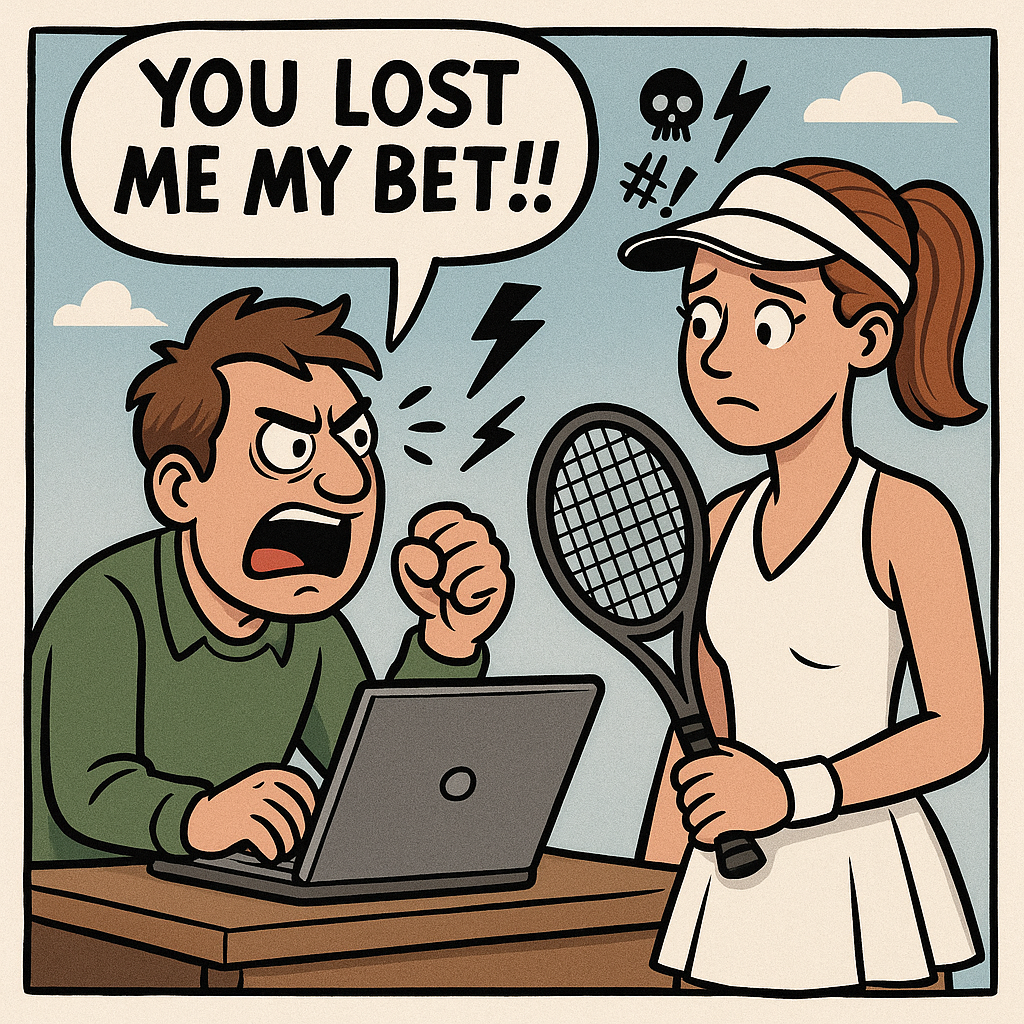A new report from the Women’s Tennis Association (WTA) and the International Tennis Federation (ITF) lays bare the ugly underside of online sports fandom: a staggering 40% of abuse aimed at women tennis players in 2024 was linked to enraged gamblers.
The Threat Matrix—an AI-driven monitoring system developed by Signify Group—scanned 1.6 million posts from January to December 2024. It verified around 8,000 messages as abusive, threatening, or violent. Most startlingly, just five players bore the brunt of 26% of this abuse, and 10 accounts alone were behind 12% of all toxic content.
“Online abuse is unacceptable… It’s time for the gambling industry and social media platforms to tackle the problem at its source,” said WTA Players’ Council member Jessica Pegula.
Online Abuse in Numbers (2024)
| Metric | Figure |
|---|---|
| Total messages monitored | 1.6 million |
| Abusive messages verified | ~8,000 |
| Accounts identified as abusive | 4,200 |
| Prolific abusers (97 users) | 23% of all abusive posts |
| Five most targeted players | 26% of all abuse |
| Abuse linked to gambling rage | 40% overall |
| Top 10 gambling-linked accounts | 12% of abusive messages |
| Private threats reported (DMs, emails) | 56 reports from 28 players |
| Private threats tied to gambling losses | 77% |
| Cases escalated to law enforcement | 15 (incl. FBI, national bodies) |
What’s Being Done?
- Event bans & law enforcement: 15 of the most egregious cases have been forwarded to the FBI and other authorities. Offenders are being barred from tournaments.
- Real-time moderation coming: Threat Matrix will soon be expanded to include automatic removal of abusive content across player and official social channels.
- Collaboration call: The WTA and ITF are pushing for a “constructive dialogue” with the gambling industry to rein in abuser behavior.
“While the volume is worrying, the concentration of abuse among a small group means targeted action can be effective,” said Jonathan Hirshler, CEO of Signify.
Final Word
As tennis continues to draw a global fanbase—and increasing gambling activity—the toxic backlash players face grows more sophisticated and intense. The takeaway is clear: protecting players from digital hate isn’t just the responsibility of tennis authorities—it’s a job for tech companies, betting firms, and society at large. We doubt though that the Social Media platforms are listening.

